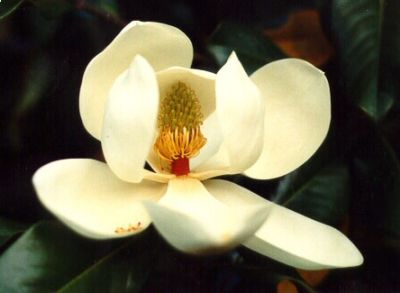131 species out of the 245 manganolia species that grow in the wild are in danger of extinction due to the destruction of habitats for the development of agricultural fields and the overexploitation of the wild trees
The magnificent bloom of the magnolia trees decorates gardens, boulevards, roadsides and more, but, according to a joint report on behalf of: "The Botanical Gardens Organization" and "The Flora and Fauna Organization", published as the "Red List of Magnolias" - Botanic Gardens Conservation International (BGCI) Fauna and Flora International (FFI). Red List of the Magnoliaceae, more than half of the magnolia species growing in the wild / in forests, are in danger of extinction.
In the "Red List" 131 species out of 245 species that grow in nature. The danger to the continued existence of the trees stems mainly from the destruction of the habitats/forests for the development of agricultural fields, and there is also an overexploitation of the wild trees.
The genus Magnolia was included among the first plants to develop flowers, fossil remains have been dated to a period of about 100 million years ago, as a flowering tree that developed before "the existence of bees" its flowers were adapted to fertilization / pollination by beetles, it is speculated that this is the reason for the thick and hard petals and the hard ovary that developed To prevent eating and scratching by the beetles.
The genus Magnolia branches from a large and wide family - Magnoliaceae whose species are common in South and East Asia, in the islands of the Indian Ocean and almost all over the American continent.
The genus was first described in 1703 by the botanist Charles Plumier who named it after Pierre Magnol, a botanist from Montpellier in France. Later the species he described will be called "Magnolia Plumeria".
Magnolia species were among the first flowering trees that were cultivated into many different subspecies, (800-year-old trees are found in Chinese temples) Long before the official botanical description, the tree was used mainly in China, in addition to its use as "decoration", the tree's flowers are used to prepare concoctions with nutritional and medicinal properties . Magnolia trees were planted as soil conditioners, as "suppliers" of green food for sheep and cattle and as a source of wood, for carving ornaments and furniture items, cultivated subspecies were distributed all over the world and are considered among the ten most common ornamental trees. The states of Mississippi and Louisiana have designated the magnolia as a "national flower", (Louisiana is also called the "Magnolia State").
About a third of all magnolia species grow in Asia and more than 40% in China, according to the report: half of the magnolia trees in China are in danger of extinction, a similar picture is painted in America: in Colombia 30 of the local species are in danger,
At the end of April, the third Global Botanic Gardens Congress will be held in China, following which a survey will be conducted to identify the magnolia species found in botanical gardens around the world, species that will constitute a reserve for the conservation of key species.
Among the trees of the natural forest, the magnolia is one of the most sensitive to any change in conditions, and as such is a "canary" for any negative change and the first to be damaged, the disappearance of the magnolia from the forests in the wild will detract from the beauty of the forest and the quality of life of the residents, the tree that provides many needs to the residents of the areas where it grows deserves to be protected and preserved.
Dr. Assaf Rosenthal,
Tour guide/leader in Africa and South America.
For details: Tel. 0505640309 / 077-6172298,
Email: assaf@eilatcity.co.il


One response
Doesn't it need the cold to bloom? Can it be planted in pots?